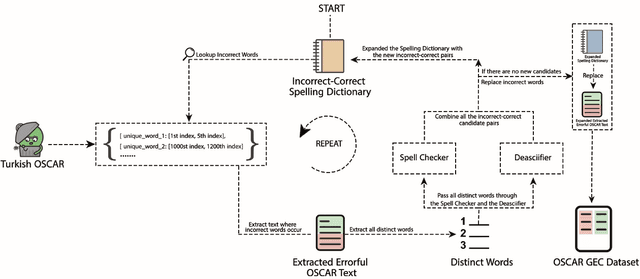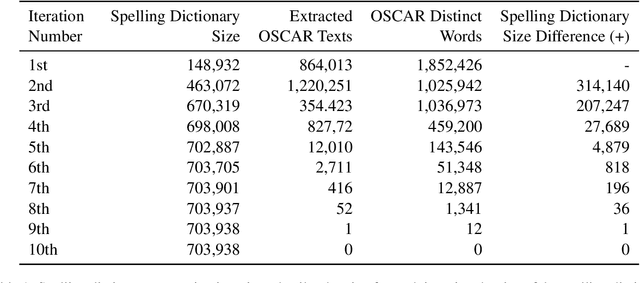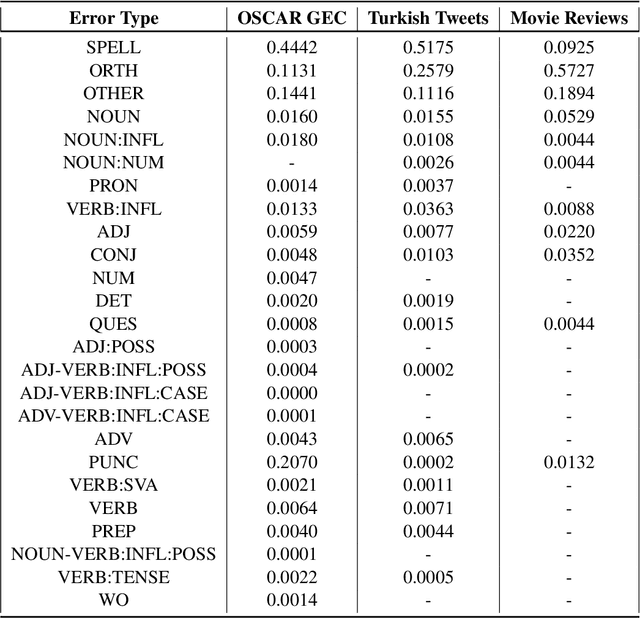Asım Ersoy
Organic Data-Driven Approach for Turkish Grammatical Error Correction and LLMs
May 24, 2024



Abstract:Grammatical Error Correction has seen significant progress with the recent advancements in deep learning. As those methods require huge amounts of data, synthetic datasets are being built to fill this gap. Unfortunately, synthetic datasets are not organic enough in some cases and even require clean data to start with. Furthermore, most of the work that has been done is focused mostly on English. In this work, we introduce a new organic data-driven approach, clean insertions, to build parallel Turkish Grammatical Error Correction datasets from any organic data, and to clean the data used for training Large Language Models. We achieve state-of-the-art results on two Turkish Grammatical Error Correction test sets out of the three publicly available ones. We also show the effectiveness of our method on the training losses of training language models.
In What Languages are Generative Language Models the Most Formal? Analyzing Formality Distribution across Languages
Feb 23, 2023



Abstract:Multilingual generative language models (LMs) are increasingly fluent in a large variety of languages. Trained on the concatenation of corpora in multiple languages, they enable powerful transfer from high-resource languages to low-resource ones. However, it is still unknown what cultural biases are induced in the predictions of these models. In this work, we focus on one language property highly influenced by culture: formality. We analyze the formality distributions of XGLM and BLOOM's predictions, two popular generative multilingual language models, in 5 languages. We classify 1,200 generations per language as formal, informal, or incohesive and measure the impact of the prompt formality on the predictions. Overall, we observe a diversity of behaviors across the models and languages. For instance, XGLM generates informal text in Arabic and Bengali when conditioned with informal prompts, much more than BLOOM. In addition, even though both models are highly biased toward the formal style when prompted neutrally, we find that the models generate a significant amount of informal predictions even when prompted with formal text. We release with this work 6,000 annotated samples, paving the way for future work on the formality of generative multilingual LMs.
 Add to Chrome
Add to Chrome Add to Firefox
Add to Firefox Add to Edge
Add to Edge